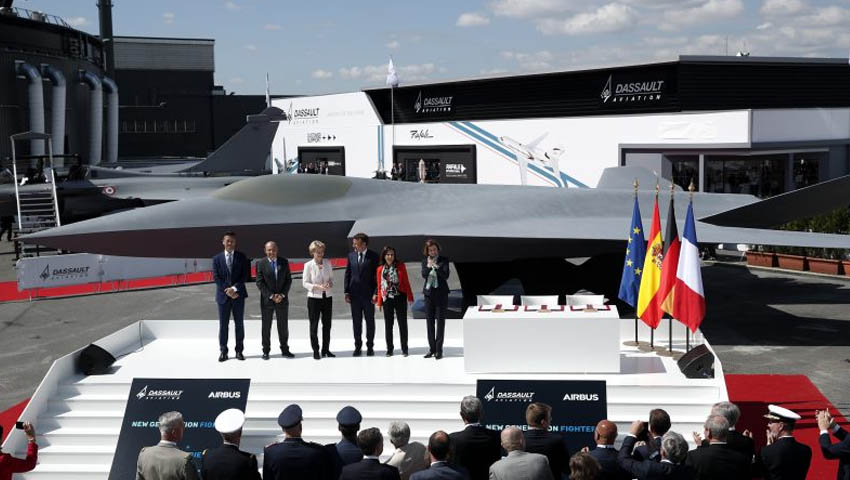As the joint European pursuit of sixth-generation air combat capabilities continues to gather pace, the collaborative nature of the European program provides unique opportunities for Australia to join in the next-generation research, development and manufacturing program, building on the precedent established by programs like the F-35 Joint Strike Fighter and both the Boxer CRV and Attack Class programs.
As the fifth-generation revolution continues to transform Australian and allied air forces, regional air forces have been modernising and expanding their own fighter fleets to bolster the combat capability of their fighter forces, with the domestic development of comparable fifth-generation platforms key to establishing and maintaining regional air and multi-domain dominance.
Fighter aircraft, like every facet of military technology, are rapidly evolving. The current global and regional transition from fourth- to fifth-generation fighter aircraft, like the F-22 Raptor and F-35 Joint Strike Fighter platforms, is reshaping the role of fighter fleets and the balance of power in Australia's region.
Fifth-generation fighter aircraft represent the pinnacle of modern fighter technology. Incorporating all-aspect stealth even when armed, low-probability-of-intercept radar, high-performance airframes, advanced avionics and highly integrated computer systems, these aircraft provide unrivalled air dominance, situational awareness, networking, interdiction and strike capabilities for commanders.
However, the increasing production and operation of similar weapons systems by potential adversaries, following the development of the Russian Su-57 and export variants in the mid-2000s, combined with the advent of China's J-20 and FC-31, is serving to narrow the fifth-generation capability gap between the US and its global allies, including Australia.
In response the US has kicked off the development of its own sixth-generation suite of systems for both the US Air Force and US Navy as part of a modernisation and recapitalisation program for the ageing F-22 and F/A-18E/F and G series Super Hornet and Growlers.
"The future system will have to counter adversaries equipped with next-generation advanced electronic attack, sophisticated integrated air defence systems (IADS), passive detection, integrated self-protection, directed energy weapons, and cyber attack capabilities. It must be able to operate in the anti-access/area-denial (A2AD) environment that will exist in the 2030-2050 time frame," the US Air Force solicitation states.
The emergence of increasingly capable fifth- and fourth-generation Russian aircraft, combined with the increasing capability and numbers of advanced Russian integrated air and missile defence systems, namely the S-300, S-400 and eventually the S-500 systems, are all serving to challenge the combat effectiveness and survivability of both the jointly-European developed Eurofighter, Dassault Rafale and the Panavia Tornado's currently in service with the German Luftwaffe.
Enter the FCAS
Accordingly, France, Germany and now Spain have initiated the Future Combat Air System (FCAS) program – designed to serve as part of a system of systems, consolidating an array of interconnected and interoperable elements, including unmanned medium altitude, long endurance (MALE) drones, the existing fleet of Eurofighter and Rafale fighter aircraft, cruise missiles and drone swarms.
It is expected that the demonstrator phase will cover the period between 2019 and mid-2021 and will serve as a starting point for demonstrators and technology development for a range of new aerial platforms to fly by 2026, including:
- New Generation Fighter (NGF);
- Remote Carriers (RC); and
- Air Combat Cloud (ACC).
The FCAS system will serve as a critical component of a connected and interoperable system with a vast perimeter of specialist mission aircraft, satellites, NATO systems and a distributed network of land and naval combat systems. FCAS is designed to assure European autonomy in the air and space domain, while enhancing existing political, strategic and industrial partnerships in Europe.
International industry collaboration
In recent years, Australia has increasingly adopted a range of European weapons systems, from the Boxer combat reconnaissance vehicle as part of the $5.2 billion LAND 400 Phase 2 program, the Airbus-designed and modified KC-30A Multirole Tanker Transport (MRTT), the joint Army and Navy fleet of MRH-90 and Army fleet of ARH-Tigers, and the $50 billion Naval Group designed Attack Class submarines.
Each of these programs, combined with the the increasing capacity of Australia's industrial capability and value adding capacity as developed throughout the F-35 program, places Australia in an ideal position to integrate and participate in the development of any number of sixth-generation fighter designs to ensure continued air combat capability and interoperability with key regional and global allies in increasingly contested environments, beyond 2030.
Further supporting these factors is the growing integration and collaboration of Australian academic institutions with European industry partners and academic counterparts, which further positions the nation as an attractive industrial partner and potential customer for a potential European designed sixth-generation air combat platform, providing economic benefits to both Australia and European customers through economies of scale.
Collaboration of this scale also supports the Australian government's Defence Industrial Capability Plan released in 2018 – which identifies the government's long-term vision to "build and develop a robust, resilient and internationally competitive Australian defence industry base that is better able to help meet defence capability requirements" in recognition of the rapidly evolving geo-strategic environment and Australia's changing role in the region.
Finally, the nation's growing Industry 4.0 capabilities, and in some cases world-leading additive manufacturing, positions Australia well to further support a large-scale collaborative research, development and manufacturing program supporting broader global allies and the international 'rules-based order'.
For Australia, the future operating environment to the nation's immediate north, particularly in the face of increasingly capable Russian and Chinese airframes and integrated air and A2AD networks, will necessitate investment in and acquisition of a highly capable, long-range, air dominance fighter aircraft to complement the F-35 Joint Strike Fighters and replace the ageing F/A-18 E/F Super Hornets, beginning in the mid 2030s.
Let us know your thoughts and ideas supporting the next stages of development for Australia's sovereign defence capability in the comments section below, or get in touch with



